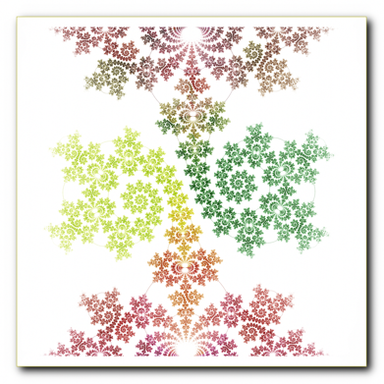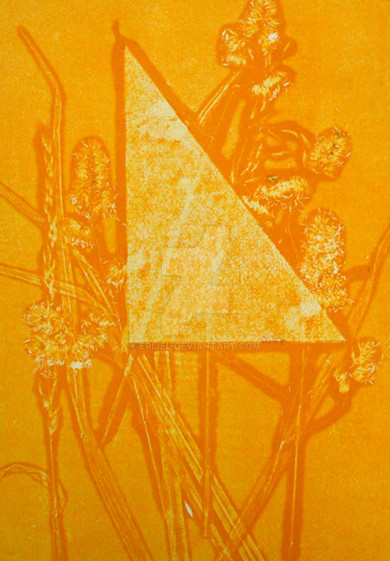HOME | DD
 markdow — Polyquads
by
markdow — Polyquads
by

Published: 2010-02-04 16:32:00 +0000 UTC; Views: 2822; Favourites: 17; Downloads: 34
Redirect to original
Description
These animals, like the squeels that eat them, use cryptic coloration and visual confusion to avoid predation. Polyquads are the larval stage of squirms .When their sensitive eyes detect motion, they don't flee but madly swim in tight circles. This colony is composed of all left-handed polyquads. Colonies can be made up of any mix of left and right-handed polyquads, but the quadruplet siblings are always of uniform handedness.
----------------------
This image is dedicated to the Public Domain . There are no restrictions on use. Claiming to be the originator or owner, explicitly or implicitly, is bad karma . A link (if appropriate), a note to markdow30@gmail.com, and credit are appreciated but not required.
Related content
Comments: 16

I know the rows must be parallel with the edges. But I can't see horizontal or vertical lines! For some reason my eyes perceive slightly tilted lines 5 to 10 degrees from straight up or straight across.
👍: 0 ⏩: 1

Yes, I saw the same thing. Partly this is due to the regular slope of the tails.
But I think the main effect is similar to the café wall illusion . The simi-regular ordering of black and white mimics the offset tiles, and the thin mix of tails at the borders mimics the "grout", the gray line between the tiles that enhances the illusion.
It would be cool to make a tesselation that purposely matched the café wall illusion design.
👍: 0 ⏩: 0

It's very escher-esque in its use of starkly contrasted colors and stylized animals.
However, the cross-shaped pattern in the center of each "quad" is a "gap", and this prevents it from being a true tessellation*. Could you not convert those gaps into fins?
* A tessellation is, according to Escher, "a regular division of the plane", without gaps or overlaps.
👍: 0 ⏩: 11

Yes, I cheated in the Escher sense.
Using heavy and irregular boundary lines is another kind of cheat, common technique for defining fine features that don't appear in the boundaries without them. Escher used this "cheat" a lot. Using only the contrast between colorings is a bit more desireable for a "pure" tesselation. But often the different colorings detract from the effect. In this case the white and black polyquads look pretty good, even though few have ever seen a white polywog, which they resemble in form.
👍: 0 ⏩: 0

Maybe I'll redo this with a different tesselation of the cross-shaped regions. That's a nice challenge in itself, designing a figured tesselation of a bounded and non-square region. Perhaps small copepod type animals as food for the polyquads.
👍: 0 ⏩: 0

It would be boring to have this single figure cover with no gaps. Maybe I could distort the edges, or pull a few out into 3-D.
👍: 0 ⏩: 0

I tried filing the cross-shaped patterns with a third color, but I didn't like it as much. I like the op-art aspect too much. And there is a nice (but obscure) kind of code in these regions, that gives information about the ordering of the polyquads. There are two types of these intersticial pattens -- at the center of a polyquad and at the intersection of the corners.
👍: 0 ⏩: 0

I could add fins, but they would be squates. And there would be no room to swing their tails.
I might make a nice composition to mix polyquads and squates, but the first is freshwater and the later marine.
👍: 0 ⏩: 0

That's ridiculous, polyquads don't have fins!
👍: 0 ⏩: 0

Unfortuately polyquads don't wear loose fitting clothes or have flowing hair to work with.
👍: 0 ⏩: 0

Most tesselations, in particular the ones that inspired Escher, use only abstract shapes. I don't see a problem in mixing abstract with concrete figures.
👍: 0 ⏩: 0

It is a true tesselation; if I had left those cross-shaped regions transparent it would have gaps and not be a tesselation. Escher rarely used such a simple theme (a uniform square grid), but he did use gaps to good effect -- better than mine! His gaps usually arose though spatial morphing, but it is similar in that his morphed animal figures did not tesselate, where their basis tiles did.
He also used the gaps themselves to good effect in the composition. I like the way my gaps interact with the animal figures. "birds and fish " by knotty-inks uses similar gaps, of two shapes with a very nice effect. They are a kind of focus of the piece.
👍: 0 ⏩: 0

This is better described as a square Truchet tiling. The motifs on each square match across tiles, rather than the figure shapes matching.
👍: 0 ⏩: 0

amazing image! looks like it will slide off the paper.
👍: 0 ⏩: 0

























